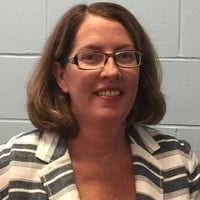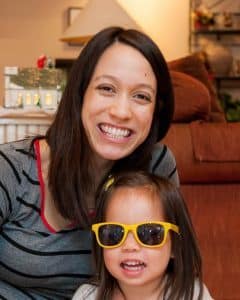In Real Life: Who Gets to Decide Which Student Outcomes Matter?
CompetencyWorks Blog

This article is the second in a nine-part “In Real Life” series based on the complex, fundamental questions that practitioners in competency-based systems grapple with “in real life.” Links to the other posts can be found at the end of this article.
One tell-tale feature that sets a competency-based education (CBE) system apart from a traditional school system is the naming of competencies – specific sets of knowledge, skills, and abilities – that each and every student must master in order to move from one stage to the next. Inherently, this feature can also be one of the most controversial.
At first glance, the idea may not appear unique. Every school system in America has education standards, adopted in part by states and added to by districts and schools, to help ensure consistency in what students are learning. Standards shape lessons and tests, and students must do well enough to pass their classes and receive a diploma. We are all familiar with this traditional notion of standards.
In CBE systems, competencies often represent bigger-picture ideas when compared to traditional standards, and they often differ in one other important way: every student is required to master all of them. Because the competencies are designed to represent sets of knowledge and skills that are essential for postsecondary and lifelong success, insisting on mastery is one way CBE systems ensure that every student graduates ready for the next phase.
It is this insistence on mastery that has tremendous implications for how the competencies themselves are defined, and in particular, for the process through which the competencies are decided. Who gets to say what knowledge and skills are so important that every single kid must master them? Whose opinions are consulted? Are these decisions being made by parents and local communities through democratic processes, or are the competencies determined by outsiders with little input from local communities?
To better understand how competency-based school systems reckon with these fundamental issues, I sat down with several practitioners including Dr. Dianne Kelly, Superintendent of Revere Public Schools in Massachusetts.
Revere is located just north of Boston and serves pre-K through 12th grade. Considered a mid-sized district, Revere enrolls just under 8,000 students who are majority-Hispanic (52%) and face socioeconomic challenges (71% qualify for free and reduced-priced lunch, and median household income is much lower than the statewide average). The district is still on its way toward being fully competency-based – for example, Revere High School’s graduation requirements are still defined in course credits based on seat time – but it has recently taken a leap forward by establishing clear expectations for student outcomes and defining the student-focused strategies to get them there.
Kelly began her career with the district as a math teacher roughly two decades ago. In the time since, she has donned increasing responsibilities through administrative roles including serving as district Superintendent for the past 4 years.
In our interview, adapted below, Kelly describes the transformation she has witnessed in the district and how they are engaging the whole community in setting a new vision for what all Revere graduates should know and be able to do. As you read, consider how the use of inclusive, community-focused processes can help ensure that competency-based systems define student outcomes that are meaningful and worthy of upholding as non-negotiable expectations for all students.
Jennifer Poon: How did Revere come to discover – and desire – a competency-based model of teaching and learning?
Dianne Kelly: It goes back over 20 years to the initial implementation of education reform in Massachusetts. For the first time, we had a statewide assessment, and we saw how miserably our district was performing. We realized we were doing a disservice to our kids. For example, in my first year of teaching, two of the classes I taught were called Consumer Math 1 and Consumer Math 2. At the time, the students only needed two years of math to graduate, and many kids satisfied the requirement with these two classes. But if I had to describe these classes today, they would be characterized as 5th grade math and 5th grade math again. We knew we had to increase the rigor of our instruction.
We also needed to change our culture. We had what I would describe as a culture of low expectations for what our kids could do – both as staff and as a community. We didn’t expect our public school kids to go to the Ivy League. There wasn’t a sense of pride in ability. The kids in the community whose parents had wherewithal sent their kids to private school, especially at the high school level. Enrollment was much lower than it is today.
Around 1995, my predecessor as Superintendent, Dr. Paul Dakin, as well as other city and school leaders, really began to challenge peoples’ mindsets and belief systems about what our kids – and we as educators – are capable of. When those first state assessment results came out, Dr. Dakin didn’t focus on blaming or shunning teachers and administrators. The message from leadership was always, “together we can do better; we need to do the work that will help our kids achieve.”
There was push-back initially, with some people blaming poverty and kids’ home lives as reasons for their low academic scores. But this was not tolerated. The district leadership talked instead about high expectations for everybody. There were tough conversations with more than a few staff members – teachers, administrators, and others – saying “You need to get on the right side of the ship or find your way somewhere else.”
He also brought in outside partners to help us change, one of which – more recently – is the Nellie Mae Education Foundation. In 2013 we became one of a number of districts awarded a 3.5-million dollar grant to do professional development and change the way we operate. Through this opportunity, we learned about “student-centered learning,” empowering students, and making sure they have a voice and choice in their academic experiences. The grant enabled us to partner with Brandeis University, who guided our process of defining our district’s vision for student outcomes which we call the High School “Logic Model.” It is a consensus document describing the outcomes we want for our graduates and the student-focused strategies we believe will get them there.
JP: When defining these expected outcomes for all students, how were various stakeholders and community members invited to the table, and how did you ensure that diverse and representative voices were present?
DK: To engage parents, we used our high school messaging system to invite every parent to join the conversation, and anyone who stepped forward was welcome. At multiple stages in the process, we presented to our existing parent committees, such as the members of the Parent Teacher Organization and school improvement council. We also discussed the Logic Model at a couple of school committee meetings which were televised so parents and community members could follow along at home.
We hired a full-time parent liaison for the high school who is Spanish-speaking and helps run monthly meetings. This helps ensure that we’re being responsive to our predominantly-Hispanic community in our deliberations.
For students, we involved our Student Senate, which is a diverse and representative advisory board to the Principal with four members from each grade level.
JP: Were there – or are there – instances of disagreement among stakeholders, and how are those resolved?
DK: This is where having Chris Kingsley from Brandeis University as a third-party facilitator was helpful. He helped people navigate differences of opinion and focused the conversation around manageable chunks as we wrote the Logic Model document.
JP: Now that it’s been completed, how do you protect the longevity of the High School Logic Model and ensure it continues to represent the desires of your community?
DK: We try to be open and engaging with everyone along the way. At all our meetings with parents and stakeholders, we share the vision, talk about why we’re doing what we’re doing, and we get feedback.
We also have ongoing engagement and data collection through a new system of surveys for students, parents, and teachers where we ask them about their involvement and how we can improve. In our first administration of the parent survey this past summer, over 700 parents responded. Students were given time during their Advisories to take the survey, and teachers were given time in their professional learning group sessions, so we have a 100% response rate from these groups. This data is used to reflect on the Logic Model as well as our district and schools goals. We use the feedback to identify areas for us to begin working on or to continue working on.
JP: What is the impact of this process on the student experience at Revere, and what are you working on next?
DK: The Logic Model now drives our work. It has allowed us to identify areas where our policies and practices were standing in the way – such as our grading practices or our policies for accessing advanced coursework – and to establish committees to make changes. For example, our Grading Practices Subcommittee has since created a Core Values document for grading that resulted in our identifying Habits of Work that all students are now graded on separately from their academic performance.
In terms of measuring academic performance, we’re working with the Massachusetts Consortium for Innovative Education Assessment to create performance tasks and rubrics, designed by teachers, which allow students to decide how they’re going to demonstrate mastery. Students now have greater choice and voice and can bring their own cultures and experiences into their work.
We’re also bringing this work into the lower grades. We continue to partner with Chris Kingsley (who has since left Brandeis University) to develop Middle School and Elementary Logic Models that backwards-map from the High School Logic Model. This work in ongoing for the 2018-2019 school year but ultimately will provide us with a defined through-line to help our youngest students realize the goals of the High School Logic Model by the time they graduate.
We still have a long way to go before our families and students feel fully engaged with the decision-making process, but it is a priority for us. We consider ways to engage families in everything we do. And we have much work to do before we can call ourselves a competency-based district, but again, we consider these goals as part of every decision we make. Change takes time and changing a century-old institution takes even longer. I think the important piece is that we keep moving in the direction that empowers teachers to innovate, empowers students to act in confidence, and empowers parents to be part of the change process.
—
Read the rest of the “In Real Life” series at the following links:
- Series Introduction
- Part 1: Who Gets to Decide Which Student Outcomes Matter?
- Part 2: Designing Outcomes Aimed for Equity
- Part 3: How can CBE systems ensure learning is deep, ongoing, and integrated?
- Part 4: How feedback loops and student supports help ensure learning is deep, ongoing, and integrated.
- Part 5: How do CBE systems manage differences in pace?
- Part 6: How do CBE systems support all students to reach mastery?
- Part 7: How do we know if competency-based education is working?

Jennifer Poon’s mission is to effect social justice by modernizing the public education system to be more responsive to the needs of all learners, especially those most historically underserved. Currently, she is consulting on projects of interest while serving as a Fellow with the Center for Innovation in Education. Previously, Jennifer directed the Innovation Lab Network at the Council of Chief State School Officers. Prior to that, she taught at King/Drew High School in Compton, CA. Tweet to her @JDPoon.